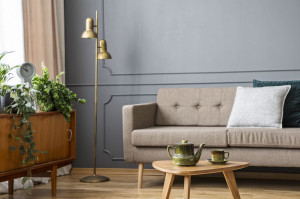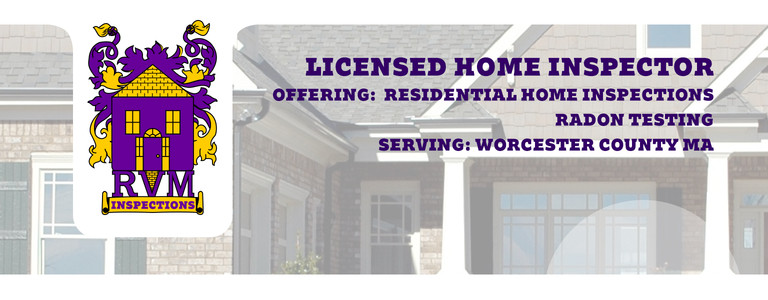 Did you know that the average size of a home in the United States in the early 1950s was less than 1,000 square feet? Fast-forward to today, and the average American home has more than doubled in size. According to the U.S. Census Bureau, newly constructed homes now average over 2,200 square feet.
Did you know that the average size of a home in the United States in the early 1950s was less than 1,000 square feet? Fast-forward to today, and the average American home has more than doubled in size. According to the U.S. Census Bureau, newly constructed homes now average over 2,200 square feet.
For many homebuyers, the idea that “bigger is better” still holds a strong appeal. After all, who doesn’t want a big kitchen, a guest room, or a dedicated home office? However, that extra square footage often comes at a price—not just in terms of the mortgage, but in utility costs, maintenance, and time spent cleaning.
Whether you’re a first-time buyer trying to stay within budget, an empty nester ready to downsize, or a retiree seeking a more manageable lifestyle, a smaller home might be worth serious consideration. Let’s take a closer look at the many benefits that come with owning a smaller home.
1. Smaller Homes Are More Affordable
One of the most obvious and immediate benefits of a smaller home is the cost savings. A smaller home typically comes with a lower purchase price compared to a larger property in the same neighborhood. This can translate to a smaller mortgage, a lower down payment, and less interest paid over the life of the loan. In competitive real estate markets, choosing a smaller home can make homeownership more attainable.
Beyond the purchase price, smaller homes often have reduced ongoing expenses. Monthly utility bills, property taxes, and insurance premiums all tend to be lower, meaning more room in your budget for savings or experiences you truly value.
2. Lower Utility Costs
Heating and cooling a large home can be expensive—especially if the home has high ceilings, multiple stories, or older HVAC systems. A smaller space generally requires less energy to keep comfortable year-round. While factors like insulation, windows, and climate matter, square footage plays a major role in your utility bill.
If you’re environmentally conscious, downsizing can also help reduce your carbon footprint. Using less energy to power, heat, and cool your home is one way to live a more sustainable lifestyle.
3. Less Cleaning
Think about how much time you spend cleaning now—vacuuming floors, wiping counters, cleaning bathrooms, and dusting shelves. A larger home inevitably means more square footage to maintain and more rooms to clean. By comparison, a smaller home allows for quicker and more efficient cleaning routines.
For busy families or retirees who’d rather spend their time enjoying life than doing chores, this is a big advantage. You’ll still need to keep things tidy, of course, but the workload is significantly reduced when there’s simply less space to manage.
4. Less Indoor Maintenance
Every home requires maintenance, but a smaller home often means fewer appliances, systems, and features that can break down. Think fewer light fixtures, fewer toilets, and fewer HVAC zones. While maintenance needs vary based on the age and quality of a home, fewer things to fix can mean less stress and lower repair costs.
Additionally, if you’re a DIY enthusiast, you may find it easier and more manageable to make repairs or improvements yourself in a smaller home.
5. Less Outdoor Maintenance
Downsizing doesn’t just reduce the work inside your home—it can also simplify your outdoor responsibilities. Smaller homes often come with smaller yards, which can mean fewer hours spent mowing, trimming, raking, or gardening.
If you’d like to take it a step further, consider xeriscaping or planting drought-resistant plants that require minimal water and care. Low-maintenance landscaping can save you both time and money, especially in dry climates.
6. Lower Property Taxes
In many areas, property taxes are based on the assessed value of your home. A smaller, more modest home is typically valued lower than a sprawling estate, which means you’ll likely owe less in property taxes each year. Over time, this can add up to thousands of dollars in savings.
7. Lower Insurance Costs
Homeowners insurance premiums are partially based on the cost to rebuild your home in the event of a total loss. Since smaller homes cost less to rebuild, your insurance premiums may be lower as well. This can make a noticeable difference in your monthly or annual homeownership expenses.
What is Considered a “Small” Home?
There’s no one-size-fits-all definition, but generally speaking, a small home is typically defined as a house with between 1,000 and 1,500 square feet of living space. For comparison, homes built in the 1950s were often under 1,000 square feet.
On the other hand, “tiny homes” have their own classification—usually between 100 and 400 square feet. These ultra-compact spaces are designed for minimalist living and are often mobile, catering to those who value simplicity, travel, or off-grid living.
Is a Smaller Home Right for You?
There’s no right or wrong answer here—only what’s right for your lifestyle, budget, and goals. Some people thrive in large, spacious homes with room for hosting and hobbies, while others find joy in cozy spaces that are easier to manage and maintain.
Before you buy, consider asking yourself:
How much space do I really use every day?
What can I comfortably afford?
Am I willing to spend time on maintenance and cleaning?
Do I value simplicity and efficiency?
Whether you’re upsizing, downsizing, or rightsizing, the key is finding a space that works for you. Sometimes, less really is more.








